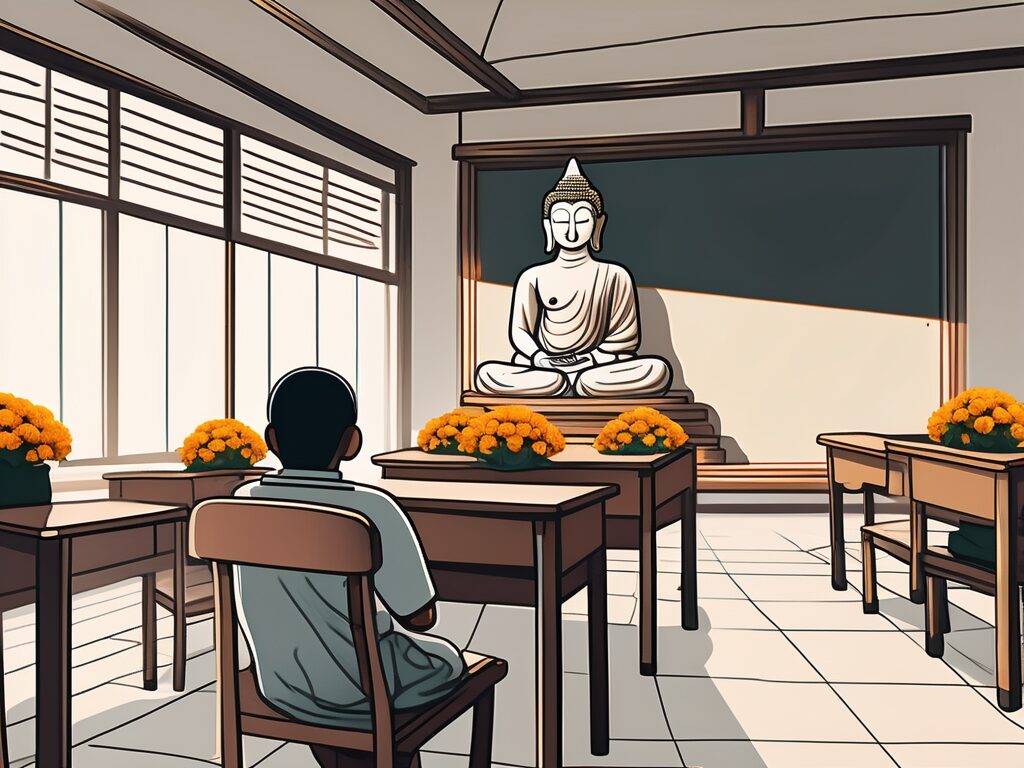In the realm of education, Thailand has been making significant strides. The country’s educators are continuously seeking innovative and effective teaching practices to enhance the learning experience for their students. This article aims to shed light on some of the most effective teaching practices currently being implemented in Thailand’s educational landscape.
Student-Centred Learning
One of the most prominent teaching practices in Thailand is student-centred learning. This approach places the student at the heart of the learning process, allowing them to take an active role in their education. It’s akin to the difference between being a passenger and a driver in a car. In the former, you’re merely along for the ride, but in the latter, you’re in control of the journey.
Student-centred learning encourages students to develop critical thinking skills, problem-solving abilities, and a sense of responsibility for their learning. This approach is particularly effective in promoting engagement and motivation among students, as they feel a greater sense of ownership over their education.
Implementation of Student-Centred Learning
In Thailand, student-centred learning is implemented in various ways. One method is through project-based learning, where students work on complex tasks over an extended period. This approach allows students to delve deeper into the subject matter, fostering a more profound understanding of the topic.
Another method is through collaborative learning, where students work together in groups to solve problems or complete tasks. This method not only promotes teamwork and cooperation but also allows students to learn from each other, enhancing their understanding of the subject matter.
Use of Technology in Teaching
Thailand’s education system has also embraced the use of technology in teaching. This practice is not unique to Thailand, as many countries worldwide have recognised the benefits of integrating technology into education. It’s a bit like upgrading from a traditional bicycle to an electric one; the core function remains the same, but the experience is significantly enhanced.
Technology in teaching can take various forms, from using multimedia presentations to enhance lessons, to utilising online platforms for assignments and assessments. The use of technology can make lessons more engaging and interactive, thereby increasing students’ interest and participation.
Benefits of Technology in Teaching
The use of technology in teaching offers numerous benefits. For one, it allows for a more personalised learning experience. Much like how a playlist can be tailored to an individual’s music preferences, lessons can be customised to suit a student’s learning style and pace, thereby enhancing their understanding and retention of the material.
Additionally, technology can facilitate communication and collaboration among students and teachers. Through online platforms, students can easily ask questions, share ideas, and collaborate on projects, fostering a more interactive and engaging learning environment.
Cultural Sensitivity in Teaching
Another effective teaching practice in Thailand is the incorporation of cultural sensitivity in teaching. Thailand is a country rich in culture and tradition, and these aspects are deeply ingrained in the society. Therefore, it’s essential for teachers to be aware of and respect these cultural nuances in their teaching practices, much like a chef would need to understand and respect the ingredients in a traditional dish.
By incorporating cultural sensitivity in teaching, educators can create a more inclusive and respectful learning environment. This practice not only fosters a sense of belonging among students but also promotes mutual respect and understanding.
Examples of Cultural Sensitivity in Teaching
There are many ways in which cultural sensitivity can be incorporated into teaching. One method is through the inclusion of cultural elements in the curriculum. For instance, lessons could include discussions about Thai traditions, customs, and values, thereby fostering a greater understanding and appreciation of the local culture.
Another method is through the use of culturally relevant teaching materials. For example, textbooks and other resources could include images, stories, and examples that reflect the local culture, thereby making the learning experience more relatable and meaningful for the students.
Conclusion
In conclusion, Thailand’s education system employs a variety of effective teaching practices, from student-centred learning and the use of technology, to cultural sensitivity in teaching. These practices not only enhance the learning experience for students but also prepare them for the challenges of the 21st century. As Thailand continues to evolve and innovate in education, it will be interesting to see what other effective teaching practices will be implemented in the future.
Elevate Your Teaching Career with IPGCE
As you strive to implement effective teaching practices in Thailand and prepare for the dynamic challenges of the 21st century, consider the International Postgraduate Certificate in Education (iPGCE) to further your professional development. The iPGCE is designed to enhance your qualifications, connect you with a global network of educators, and deepen your understanding of international curricula. With our program, you can expect to see significant career progression, including a higher rate of interview callbacks, promotion opportunities, and salary increases. Embrace the flexibility of online study with the UK’s #1 Teacher Training Course and join a community that values your growth and combats professional isolation. Take the next step in your teaching journey and Join the UK’s #1 Teacher Training Course today.

